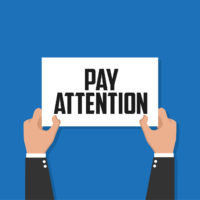Your Movement Patterns Affect Performance
The human brain organizes movement by creating movement patterns that we call on to move our bodies everyday. These patterns allow us to unconsciously engage the chain of sequenced muscle activations necessary to lift an arm, turn a head… or play a game of tennis. If we had to consciously activate every single muscle required for all the movement in our days, there would be no room in our brains for anything else!
When our patterns are well organized, our movement is smooth, efficient and easy. When our patterns are less good, our movement is inefficient, uncoordinated and difficult. Flow goes out the window. In terms of function and performance, good patterning means better movement. More efficient movement means more energy available for stamina, more strength with less effort, more mobility and agility. Whatever you do with all that is up to you. But you’ll feel better in your body doing it.
How Movement Patterns Develop
In a 2011 TED Talk, “The Real Reason for Brains,” neuroscientist Daniel Wolpert suggests that our brains evolved not to think or feel, but to control movement. Our patterns begin from the very first flow of cells in utero. They continue to develop as we grow from infancy to adulthood. These patterns are influenced by our structure, our emotions, our experiences, the movement of the people we hang out with most, the way we train our bodies, the injuries we sustain, and the way we adapt and move through challenges physical and emotional.
But our patterns aren’t just “influenced.” They are also “influencing.” They play an important and under-appreciated role in the selection and evolution of new movement strategies in our bodies. Our habitual movement patterns play a huge role in creating the structure and governing the function of our bodies, no matter what exercises we may do to strengthen our muscles.
When we go to the gym to strengthen muscles, our habitual movement patterns come with us. If the patterns you walk in with are pretty good, then your ability to build strength and movement capacity will likely go well. But if the patterns you bring to new movement challenges are less than optimal, you may find obstacles that show up as difficulty building the muscle mass you desire, uncoordinated movement, difficulty breathing, spine and pelvis control issues, or all kinds of things that feel like you just can’t get the job done.
How Different Can Our Individual Movement Patterns Actually Be?
 Handwriting is a great example of how different movement patterns can affect the movement as a whole. Think about this: most of us have had the same kind of lessons in how to shape and space our letters, do cursive and line things up on a page. But rarely do we see two people with the same handwriting. Your writing differs from mine in the amount of pressure you use to put pen to paper. It differs in the size, shape and flow of the letters. Your handwriting is uniquely yours. If you pay attention – you may even notice that your writing even changes with your moods!
Handwriting is a great example of how different movement patterns can affect the movement as a whole. Think about this: most of us have had the same kind of lessons in how to shape and space our letters, do cursive and line things up on a page. But rarely do we see two people with the same handwriting. Your writing differs from mine in the amount of pressure you use to put pen to paper. It differs in the size, shape and flow of the letters. Your handwriting is uniquely yours. If you pay attention – you may even notice that your writing even changes with your moods!
The same is true of our larger movement. I’ll bet you can recognize the people closest to you by the way they walk before you can see their faces well enough to make out their features. You might even be able to tell the kind of mood they’re in.
Funky patterns can create some unusual muscle recruitment strategies when we’re training. These unusual strategies can then cause less than optimal load transfer patterns, resulting in compensations and increased effort to get the same net results. A lack of awareness about where dysfunctional patterns are in the body can cause trouble. When paired with continued and increasing load demand, those non-optimal patterns can create inefficiencies. They may also create a cascade of compensatory movement, joint stress and risk for injury. Don’t you think that maybe your patterns deserve a little attention?
The Effect of Movement Patterns on Athletic and Strength Training
Training protocols, techniques and strategies for athletic and strength training are just that – protocols. They are valid only if the parameters that the protocol was predicated upon really exist in the body. If your structure is ideally balanced to begin with, no problem. But you just might have a hard time building glute strength if your patterning makes it hard to access your gluteal muscles! You might literally be working your butt off doing “glute exercises;” but effectively only building strength into your dysfunctional patterns!
If you’re struggling with some aspect of your fitness or athletic training, there may be some tricky patterning at play. You’ve likely heard that the definition of insanity is doing the same thing over and over again, expecting a different result? Well, when non-optimal patterns are at play, then blindly repeating an exercise or a drill that isn’t getting results may not be doing you any favours!
Side-lying Lateral Leg Raise
One of my favourite examples of this is the side-lying lateral leg raise, usually prescribed to help people strengthen their lateral hip muscles for better pelvic stability and control of the thigh bone. I see it in Pilates classes, Barre classes and fitness classes all over the place. Done well, it’s a great way to increase support, gain strength & find a platform for better mobility of the femur in the hip socket. But more often than not, this is what I see as people raise their leg to the side:
- Tailbone gripped and butt tucked under
- Overactive hip flexors, pulling the hip forward & down, and arching the back
- Adductors (inner thigh muscles) short and actually inhibiting lateral movement of the thigh
- Rib cage stiffening & compressing to add stability
- Lumbar spine tight and gripped, with little structural support for the low spine
The fundamentals are KEY in any fitness or movement training. In the scenario above, either the low back or the hip flexors (or something else) is likely managing the load of the leg. When that’s the case, you’re not NOT working the lateral hip muscles, as desired. If you repeat that in your fitness class a few times a week for a while, your low back and pelvis will likely become LESS stable, and a lot less mobile over time. Before too long, the decreasing stability & mobility in the hip joints and pelvis can affect balance. Not long after that, you may start eliminating things from your movement repertoire because they start to feel too risky. Or maybe you keep determinedly pushing through, compressing the joints to the point of structural deterioration. And that probably wasn’t part of the plan, was it? (Check out our video about the side-lying lateral leg raise here.)
HOW You Move Matters
 Trust me on this – HOW you move matters!! Practice becoming aware of your own patterns. Feel what happens as you ask your body to move in different ways; especially as you begin to add more challenge to your movement. What’s really happening in your body? Are you moving well & maintaining good structural integrity as you add load or range of motion, or are you simply compressing and producing struggle? Struggle is not the stress that creates fluid and easy strength. It creates effort, density and more struggle. Strength born of ease produces results that you can build on, and that will be sustainable for the long term. When you begin to feel what’s working well in your body and what isn’t, then you can make more supportive choices for your conditioning programs, for your physical activities and for daily life.
Trust me on this – HOW you move matters!! Practice becoming aware of your own patterns. Feel what happens as you ask your body to move in different ways; especially as you begin to add more challenge to your movement. What’s really happening in your body? Are you moving well & maintaining good structural integrity as you add load or range of motion, or are you simply compressing and producing struggle? Struggle is not the stress that creates fluid and easy strength. It creates effort, density and more struggle. Strength born of ease produces results that you can build on, and that will be sustainable for the long term. When you begin to feel what’s working well in your body and what isn’t, then you can make more supportive choices for your conditioning programs, for your physical activities and for daily life.
So what to do? Our movement patterns are pretty strongly ingrained in our brains and nervous systems. When we do what we’ve always done, it feels natural, not “dysfunctional.” Awareness is the first step. Begin to observe what’s happening in your whole body when you’re moving. Think about how that might work with the side-lying lateral leg raise from the example above.
As you lift your leg to the side, check in with your butt. Is it firmly clenched with the tail tucked under? What happens when you release the clench and let the sitz bones widen? Does the hip that’s on top sway back and forth or up and down as you raise and lower the leg? Try keeping the waist long as you pick up the leg. Does it feel wobbly to balance on one hip when we raise the leg? Imagine gently engaging your core support as you lift – maintaining a sense of length in the spine. If any of these things feel weird, you might need a little more information about your own patterning.
Awareness and Support
There’s a lot you can accomplish by just starting to pay attention to your own movement. Sometimes you need an outside eye to help you feel what you can’t immediately sense for yourself. The eyes of an informed “outsider” may help you to start to understand where your patterning is getting in the way. They may also give you information about what you could do differently for better results. If you’re taking fitness classes of any kind, make sure you find an instructor who can, and does, give you feedback about how you are performing the movement. This is obviously harder for teachers and trainers to do in a large group setting. The really good ones will find ways to get you to check in with your own sensory experiences to guide you.
If you want to explore more, find classes in your area that cater to MOVEMENT, not just to exercise. Find an instructor who can help you unleash the full potential of your movement. Don’t expect a quick fix. It takes a little time and commitment to explore this stuff fully. I promise you, the improvement in your mobility, stability, strength and endurance overall is well worth the effort! (And you might just have fun too!)
At Moving Spirit Pilates Studio, we specialize in working to optimize movement patterning. We’re not interested in fads and fluff, or in exercise for exercise sake. Our private and group Pilates memberships all involve custom designed workouts to create more fluid and efficient movement. We teach you what you need to know to move well. Then we give you the tools to develop the stamina and strength to do the right stuff when you need it most. It’s not just a workout, it’s an education about you and how you move best. If you’re curious about how Pilates and Integrated Movement training might juice up your performance, check out our Getting Started Guide, or book an Introductory Private Training Package today.
About Susannah Steers
 Susannah is a Pilates and Integrated Movement Specialist, and owner of Moving Spirit. Through movement teaching, speaking and facilitating workshops, she supports people in creating movement practices that promote fitness from the inside out. She loves building community, and forging multi-disciplinary connections. Susannah co-hosts The Small Conversations for a Better World podcast; an interview-based podcast dedicated to promoting the kind of conversations about health that spark positive change in individuals, families, communities and across the globe.
Susannah is a Pilates and Integrated Movement Specialist, and owner of Moving Spirit. Through movement teaching, speaking and facilitating workshops, she supports people in creating movement practices that promote fitness from the inside out. She loves building community, and forging multi-disciplinary connections. Susannah co-hosts The Small Conversations for a Better World podcast; an interview-based podcast dedicated to promoting the kind of conversations about health that spark positive change in individuals, families, communities and across the globe.
